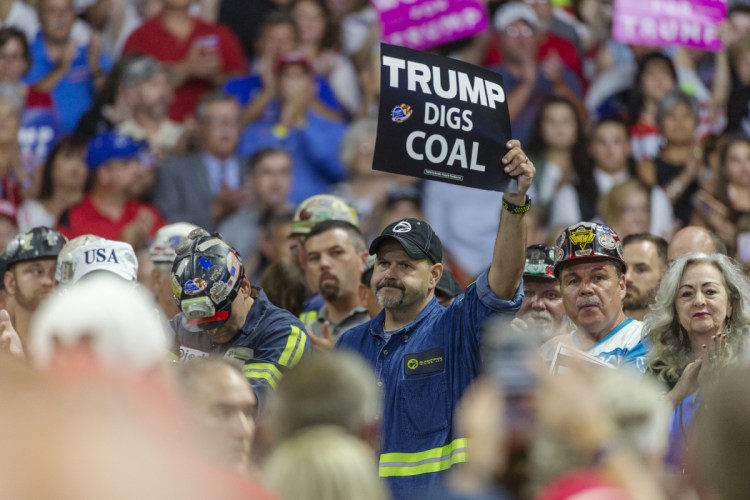Tucked inside the Trump administration’s plan to ease carbon dioxide limits is a change that could breathe new life into scores of aging coal power plants.
Experts say the shift could also unleash an additional tens of thousands of tons of nitrogen oxide emissions into the air each year.
The proposal would permit upgrades to old power plants without triggering an existing legal requirement to install costly pollution control systems at the same time. The upgrades could extend the lives of those plants by making them more reliable or cheaper to run.
For coal power plant owners, “this proposal seems to want to let them have their cake and eat it too: to improve their efficiency, run more often and not trigger” the requirements, said Andres Restrepo, a staff attorney with the Sierra Club.
More than a third of American coal-fired units lack modern controls to pare smog-forming nitrogen oxide emissions, according to a Bloomberg News review of Environmental Protection Agency data.
Some of those plants went into operation in the 1950s and 1960s, predating advanced catalytic-reduction equipment and regulatory requirements compelling its use.
All told, at least 33 percent of electricity generated by burning coal last year was not subjected to advanced pollution controls, according to EPA data.
For years, owners of those aging facilities have faced a major challenge:
The plants might benefit from equipment replacements and upgrades that would make them more reliable and less costly to run – and better able to compete with natural gas-fired units. Yet any change that would bolster nitrogen oxide emissions by 40 tons a year – perhaps just because the plants would run more as a result of the upgrades – would also trigger requirements to install modern controls to keep those pollutants at bay.
President Trump’s EPA is offering a revision as part of its proposal to replace an Obama administration regulation slashing carbon dioxide emissions across the nation’s electric grid with modest requirements for efficiency upgrades at individual power plants.
At issue is the federal government’s so-called New Source Review program, which allows power plants, refineries, factories and other industrial facilities to keep running with existing pollution-control equipment – even if it has become outdated – so the systems don’t constantly need upgrades.
Under the New Source Review program, requirements for better pollution-control systems are triggered whenever the sites undergo construction, renovations or some operational changes expected to significantly boost annual emissions.
The Trump administration’s proposed changes would make it harder to trigger the requirement by adding an additional test: insisting that emissions also go up on a short-term, hourly basis – in addition to the annual surge.
“That’s a test designed to never be triggered,” said John Walke, clean air director at the Natural Resources Defense Council. “This has been the longstanding dream of coal power plant lawyers and lobbyists dating to at least the late ’70s.”
A similar effort was proposed by the EPA under President George W. Bush, but it was ultimately abandoned in the waning years of his administration.
Supporters say the change would give plant owners the freedom to improve plants without fear of pollution-control requirements that could be too costly to justify.
It’s not clear how many coal power plant owners might take advantage of the opening to improve their facilities, amid stiff competition from cheap natural gas and with no hint of price relief on the horizon.
“With gas prices low, coal plants are marginally competitive as it is,” said Bloomberg Intelligence analyst Kit Konolige.
Copy the Story LinkSend questions/comments to the editors.



Success. Please wait for the page to reload. If the page does not reload within 5 seconds, please refresh the page.
Enter your email and password to access comments.
Hi, to comment on stories you must . This profile is in addition to your subscription and website login.
Already have a commenting profile? .
Invalid username/password.
Please check your email to confirm and complete your registration.
Only subscribers are eligible to post comments. Please subscribe or login first for digital access. Here’s why.
Use the form below to reset your password. When you've submitted your account email, we will send an email with a reset code.